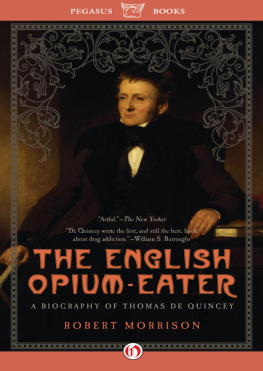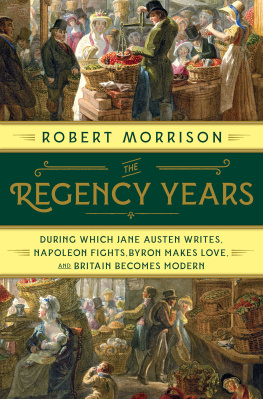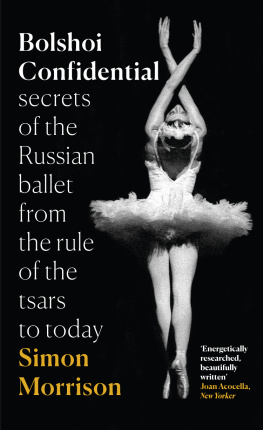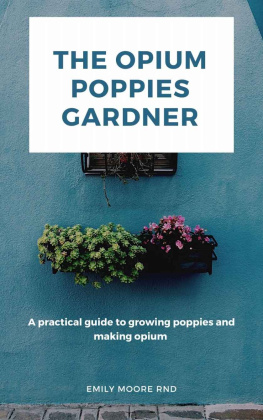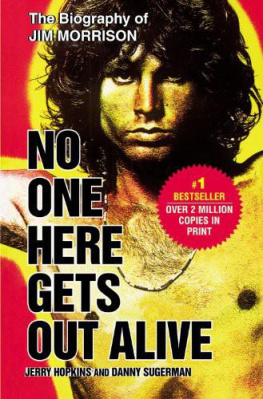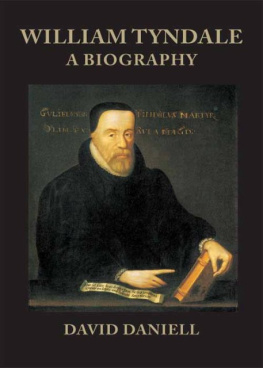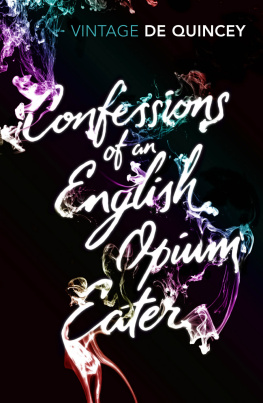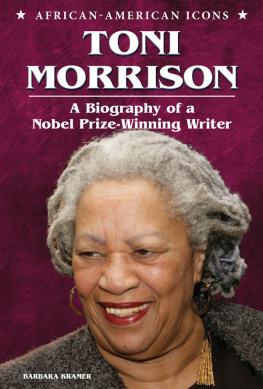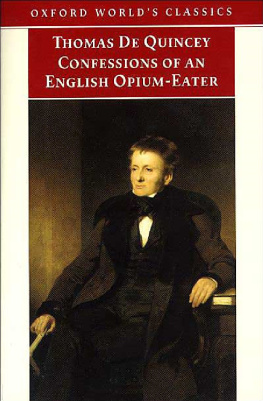Morrison - The English Opium-Eater
Here you can read online Morrison - The English Opium-Eater full text of the book (entire story) in english for free. Download pdf and epub, get meaning, cover and reviews about this ebook. City: New York, year: 2012, publisher: Pegasus Books, genre: Detective and thriller. Description of the work, (preface) as well as reviews are available. Best literature library LitArk.com created for fans of good reading and offers a wide selection of genres:
Romance novel
Science fiction
Adventure
Detective
Science
History
Home and family
Prose
Art
Politics
Computer
Non-fiction
Religion
Business
Children
Humor
Choose a favorite category and find really read worthwhile books. Enjoy immersion in the world of imagination, feel the emotions of the characters or learn something new for yourself, make an fascinating discovery.
- Book:The English Opium-Eater
- Author:
- Publisher:Pegasus Books
- Genre:
- Year:2012
- City:New York
- Rating:5 / 5
- Favourites:Add to favourites
- Your mark:
- 100
- 1
- 2
- 3
- 4
- 5
The English Opium-Eater: summary, description and annotation
We offer to read an annotation, description, summary or preface (depends on what the author of the book "The English Opium-Eater" wrote himself). If you haven't found the necessary information about the book — write in the comments, we will try to find it.
The English Opium-Eater — read online for free the complete book (whole text) full work
Below is the text of the book, divided by pages. System saving the place of the last page read, allows you to conveniently read the book "The English Opium-Eater" online for free, without having to search again every time where you left off. Put a bookmark, and you can go to the page where you finished reading at any time.
Font size:
Interval:
Bookmark:


A BIOGRAPHY OF THOMAS DE QUINCEY
ROBERT MORRISON

PEGASUS BOOKS
NEW YORK
To Carole
The love of you will never from my heart
Contents
Illustrations
Endpapers
Hunt for an Edinburgh Debtor, 1820 (Edinburgh Central Library)
Text Illustrations
Frontispiece: Thomas De Quincey, 1845 (George Gilfillan, A Gallery of Literary Portraits (Edinburgh: Tait, 1845), 154)
Plate Section
Thomas Quincey (De Quincey Memorials, ed. A. H. Japp, 2 vols (London: Heinemann, 1891), 1. 16)
Elizabeth Quincey (De Quincey Memorials, ed. A. H. Japp, 2 vols (London: Heinemann, 1891), 2. 90)
Greenhay (Collected Writings of Thomas De Quincey, ed. David Masson, 14 vols (London: Black, 188990), 1. 16)
Thomas De Quincey, aged two (Trustees of Dove Cottage)
Thomas De Quincey, aged seventeen (De Quincey Memorials, ed. A. H. Japp, 2 vols (London: Heinemann, 1891), 1. frontispiece)
Manchester Grammar School (Manchester Central Library)
Everton Terrace, by Henry Clark Pidgeon, c. 1840 (Liverpool Record Office)
William Wordsworth, sketch by Henry Edridge, 1806 (Trustees of Dove Cottage)
Samuel Taylor Coleridge, by Washington Allston, 1814 (National Portrait Gallery, London)
John Williams, sketch by Thomas Lawrence, 1811 (Cambridge University Library)
Fox Ghyll (Trustees of Dove Cottage)
The Nab (Trustees of Dove Cottage)
De Quincey, sketch by Thomas Hood, c. 1821 (Houghton Library, Harvard University)
John Wilson, by John Harden, 1809 (Abbot Hall Art Gallery, Kendal)
William Blackwood, engraving after Sir William Allan (Scottish National Portrait Gallery)
John Taylor (Keats House)
James Hessey (Keats House)
Mavis Bush Cottage (Collected Writings of Thomas De Quincey, ed. David Masson, 14 vols (London: Black, 188990), 1. ix)
42 Lothian Street (Collected Writings of Thomas De Quincey, ed. David Masson, 14 vols (London: Black, 188990), I. xxvii)
De Quinceys daughters Margaret, Florence, and Emily (Trustees of Dove Cottage)
De Quincey, daguerreotype, 1850 (Trustees of Dove Cottage)
Introduction
Thomas De Quincey wrote some of the most eloquent and searching prose of the nineteenth century. The mass media that now dominates our lives developed during his lifetime, and he was a popular and prolific contributor to it for more than forty years, whether writing for liberal-minded publications such as the London Magazine or Taits, or for conservative journals such as the immensely successful Blackwoods. He was close to some of the key literary figures of his era, including William Wordsworth and Samuel Taylor Coleridge, and his biographical accounts of both poets continue to inform our understanding of them. His essays such as On Murder Considered as One of the Fine Arts range from brilliantly funny satiric high jinks to penetrating cultural criticism, and had a remarkable influence on crime, terror, and detective fiction, as well as on the rise of nineteenth-century decadence. His Confessions of an English Opium-Eater, published in 1821 and revised in 1856, is the first account of drug euphoria and addiction that was consciously aimed at a broad commercial audience. The work has had an enormous impact on popular culture from De Quinceys day to ours, and has inspired a long line of writers, from Edgar Allan Poe, Charles Baudelaire, and Arthur Conan Doyle to Jean Cocteau, W. S. Burroughs, Ann Marlowe, and beyond. As long ago as 1975, the social psychologist Stanton Peele remarked that addiction is not, as we like to think, an aberration from our way of life. Addiction is our way of life. De Quinceys Confessions signal the birth of the modern age, and speak directly to our ongoing fascination with habit, desire, commercialism, and consumption.
This is the first biography of De Quincey in nearly three decades, and it takes into account a vast array of new material that has come to light in recent years. For more than a century, David Massons fourteen-volume edition of The Collected Writings of Thomas De Quincey was the standard edition, and by far the best edition available. But it was woefully incomplete: a great deal of material was missing altogether; most essays including the Confessions were printed only in their revised form; there was no manuscript material; and Masson sometimes silently tampered with essays by removing whole sections of prose. In 200003, this situation improved dramatically when Grevel Lindop and an international team of editors produced The Works of Thomas De Quincey, a new, fully-annotated, twenty-one-volume edition that reprinted virtually everything De Quincey published, together with all known manuscript material, and an extensive series of textual variants that charted the substantive differences between his essays in their original and revised versions. For the first time, everything that De Quincey published is easily accessible.
The situation with De Quinceys letters is very different. There are several editions of his correspondence, but none of them approaches completeness, and many of his letters have still not been published. My solution to this problem was to compile with the crucial assistance of Barry Symonds a database which contains transcriptions of, as far as I know, all of the De Quincey letters housed in public archives, and as many as possible of those housed in private collections. This database is the most comprehensive archive of De Quinceys correspondence ever assembled, and it contains an abundance of hitherto unknown or neglected material.
In the past twenty-five years, valuable new information on his life has also come from a variety of other sources. Scholarly editions of writings by Charlotte Bront, Elizabeth Barrett Browning, John Clare, James Hogg, Richard Woodhouse, and William and Dorothy Wordsworth have all brought fresh material to light. In March 2009, the British Library purchased 119 previously unknown letters written by De Quinceys three daughters, all of whom comment with often disarming frankness on their father during the final decade of his life. The critical writings of a number of fine scholars, including John Barrell, Patrick Bridgwater, David Groves, Grevel Lindop, Barry Milligan, Daniel Sanjiv Roberts, Charles Rzepka, and Barry Symonds, have exposed a host of new perspectives on De Quinceys life and autobiographical writings.
This diverse and fascinating body of material has enriched our understanding of almost every aspect of De Quinceys life and career: his enduring sorrow over the loss of his beloved sister Elizabeth; his masochistic desire for humiliation; his association with prostitutes; his pursuit of and subsequent alienation from Wordsworth and Coleridge; his struggle with drugs and alcohol; his exhilarating engagement with the London Magazine circle of William Hazlitt, Charles Lamb, Edward Irving, John Clare, and Thomas Carlyle; his complicated and sometimes hostile relationship with John Wilson, his Blackwoods colleague and closest friend; his horrendous battles with debt; his imprisonment in Edinburgh gaols; his meeting with Ralph Waldo Emerson; his interest in the Bronts; and much else.
Yet despite the wealth of new information, De Quincey remains in many ways a remarkably elusive figure. To some extent, this is simply the nature of biography: it is difficult in any study of another person to gain access to what De Quincey himself once described as that inner world that world of secret self-consciousness in which each of us lives a second life apart and with himself alone. Access to De Quincey is additionally complicated by the fact that opium was one of the central features of his existence, and that in innumerable instances he prevaricated in an attempt to keep his abuse of it hidden from others and, more importantly, from himself, his many public celebrations of the drug notwithstanding. Of his fellow opium
Font size:
Interval:
Bookmark:
Similar books «The English Opium-Eater»
Look at similar books to The English Opium-Eater. We have selected literature similar in name and meaning in the hope of providing readers with more options to find new, interesting, not yet read works.
Discussion, reviews of the book The English Opium-Eater and just readers' own opinions. Leave your comments, write what you think about the work, its meaning or the main characters. Specify what exactly you liked and what you didn't like, and why you think so.

